Bear Fight/Review, Mountainsmith Tour Lumbar Pack

Thank you for your generous contributions. At the present time we have enough images to attempt our first mosaics but these are very time intensive and I'll need to plan a block of time to do these properly. I'm thinking the last
few weeks in May or the first two weeks in June. Until then, any images you can manage to send in will still be used and will be much appreciated.
We are still accepting (and pleading for) images of children from SEA. No matter how terrible you think they are, please send them in anyway. These images will be used to complete a set of 3 high quality mosaics which will be sold to benefit the Karen and Burmese Orphans living in the orphanages and refugee camps. The more images the better, I can use all you have. Please take the time to go through your images for anything you think might help. If you missed the "No Place to Call Home" special, you can click on the link and read more about this. Thank you! QandA@Bkkimages.com
Quick Click Links
Feature Photograph
Bear Fight!II
Review, Mountainsmith Tour Lumbar Pack
Photography News of Interest
Readers Submissions
Readers Questions A Snapshot of Bangkok Images Week in Review
Infocus Blog, Don't Drop That!
Feature Photograph *menu

Canon 5d Mark II, 24-70mm F2.8L @F2.8 1/60th 55mm ISO 12,800
This weeks feature photograph is significant simply because it shows you can make a nice piece of art to hang on your wall out of scrap. Before you delete those images because they're out of focus, not ideally exposed, or maybe you don't like
the framing, let them sit an ample amount of time and give some thought to their value.
I've had a lot of people tell me "digital is free", that they can take as many images as they want and throw away most of them and it won't cost them a thing. True to a certain extent,
but not 100% accurate either. Professionals amortize their cameras like any other piece of professional equipment and many add on a "frame" charge for each frame they shoot. This charge is used
to in one form or the other receive compensation for the equipment cost associated with a certain job. Other photographers add on a charge for gear they'll need to rent to get the job done and in effect a 'frame' charge is essentially the same thing.
Cameras also have a finite lifespan. They can't shoot a million images without need of repair. Modern professional DSLRs have shutters rated at 100,000-300,000 shutter actuations. For some professionals this will last them their entire career, for
others such as sports and wildlife photographers just a year or two. The reason I'm bringing all this up is because digital really isn't free and you really should endeavor to get as much value per shutter actuation as possible. You
can help do this by not culling your images without considered thought.
I'm constantly reworking images from 10+ years ago, using new raw processing software. Why? Because new software can do things software 10+ years ago could not. Now, using those same images, I'm getting new value and better images with the most
current software. Many images I thought about culling but saved anyway have made perfectly good images when processed with the newest software. The ability to recover highlights, focus algorithms are fixing motion and shake blur, and the ease
with which we can alter exposure in only specific parts of the frame (localized editing) are all very helpful in salvaging value out of work I did a decade ago.
Other software such as I processed this feature photograph with apply filters for a specific effect or look. I've been test driving a few such programs for several months now and a review is forthcoming. You can turn your images into cartoons, sketches,
and all sorts of other looks with the click of a mouse. Through these filters your previously culled images might take on a new value.
This feature photograph wasn't well focused, it was shot at a very high ISO (12,800), poorly exposed, and even then it was only a small part of the frame. Now, I can print this any size I want and this
new look is very appealing to me. It might not be your cup of tea but that's why these software packages come with multiple filters which are infinitely adjustable. Think twice before deleting those marginal images!
Bear Fight *menu
I don't want to make light of animals fighting in artificial environments and it certainly isn't my intent. However, wild animals often act wild no matter how nice their environment might be and these bears were kept in a very nice environment. I was riding with a friend through Safari World when this bear fight took place and it really startled the both of us. The screams and roars were real, as are the open wounds shown in one of the last frames of this series.
There really are no words to describe the experience. I was going to write satirical captions under each frame but I'm sure this would have offended some and appeared insensitive. Animal fighting shouldn't be for our enjoyment. But it should be for our wonderment. I hope these images help bring to life a very real and very intense struggle between two of natures greatest beasts. Despite the images you're missing a lot of the experience because there's no soundtrack.
It started when this guy was just laying in the pond minding his own business. It ended with the same guy laying back in the pond after defending his territory.

Canon 5d Mark II, 70-200mm F2.8L IS @F5 1/200th 170mm ISO 100
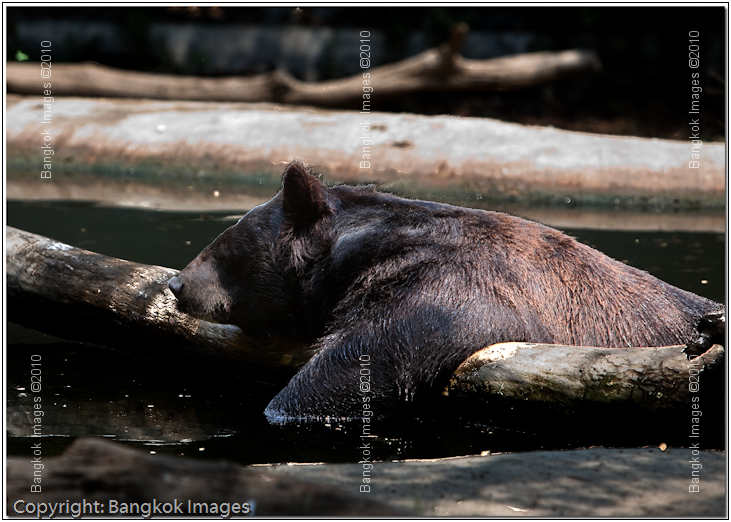
Canon 5d Mark II, 70-200mm F2.8L IS @F5 1/125th 195mm ISO 100
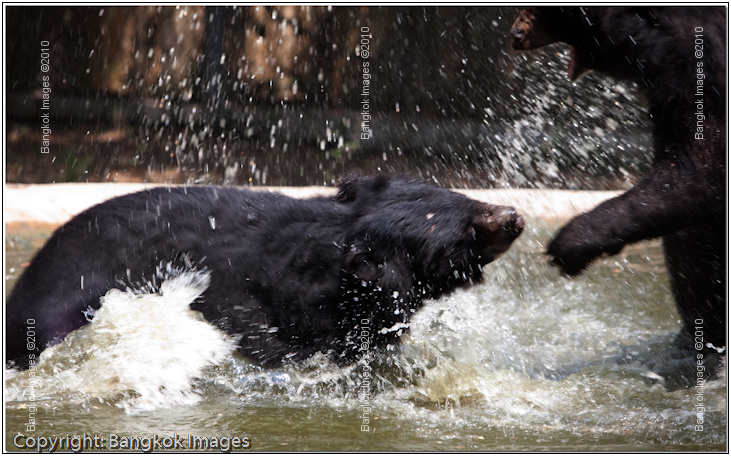
Canon 5d Mark II, 70-200mm F2.8L IS @F5 1/100th 200mm ISO 100

Canon 5d Mark II, 70-200mm F2.8L IS @F5 1/160th 200mm ISO 100
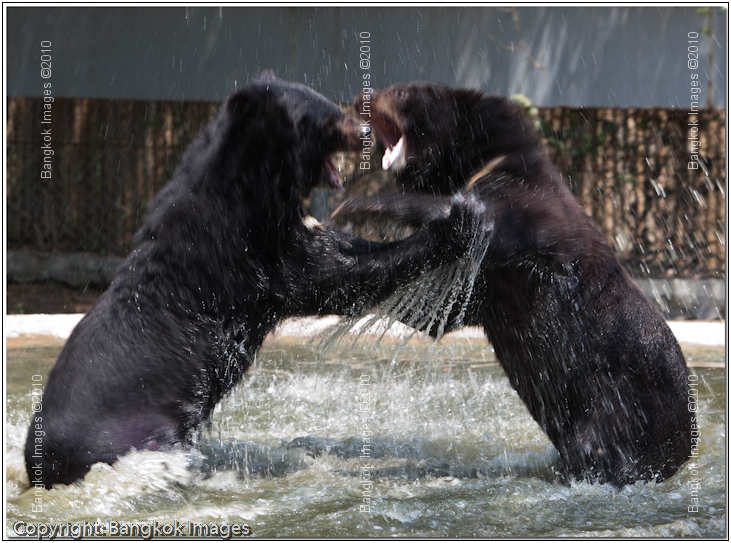
Canon 5d Mark II, 70-200mm F2.8L IS @F5 1/250th 120mm ISO 100
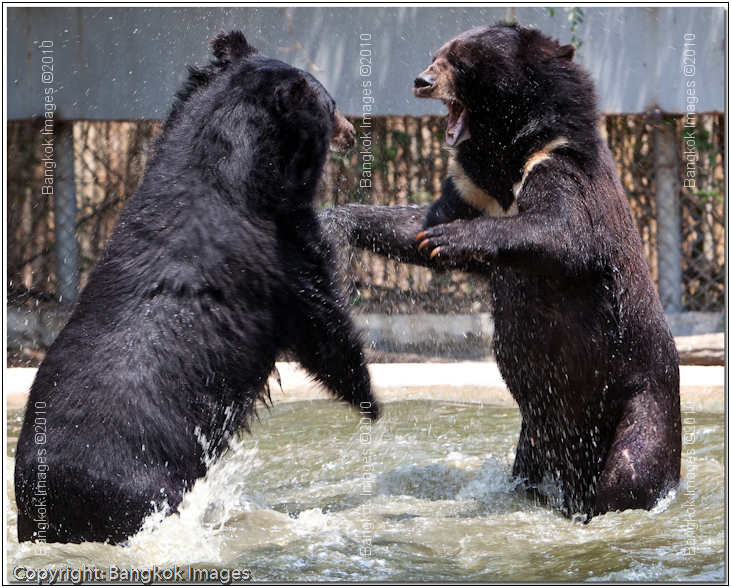
Canon 5d Mark II, 70-200mm F2.8L IS @F5 1/160th 120mm ISO 100
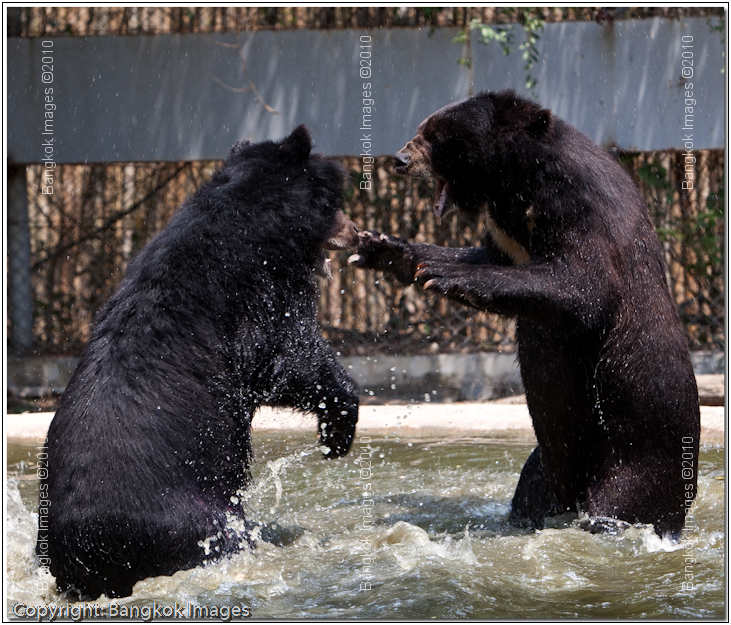
Canon 5d Mark II, 70-200mm F2.8L IS @F5 1/250th 120mm ISO 100
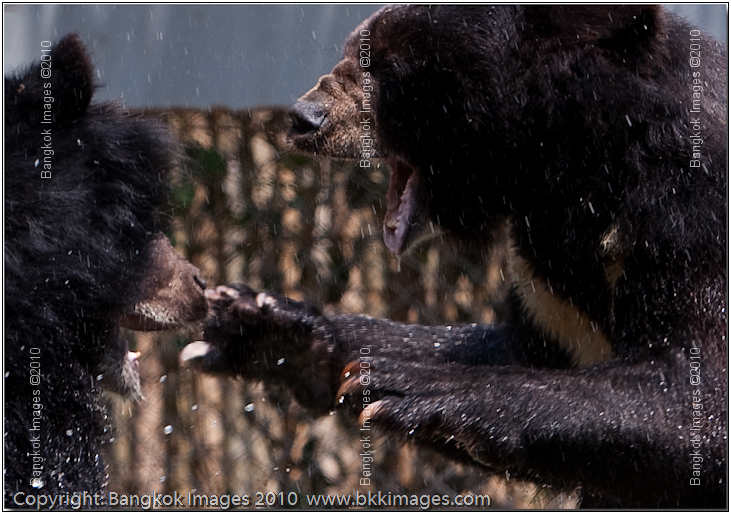
Canon 5d Mark II, 70-200mm F2.8L IS @F5 1/250th 120mm ISO 100
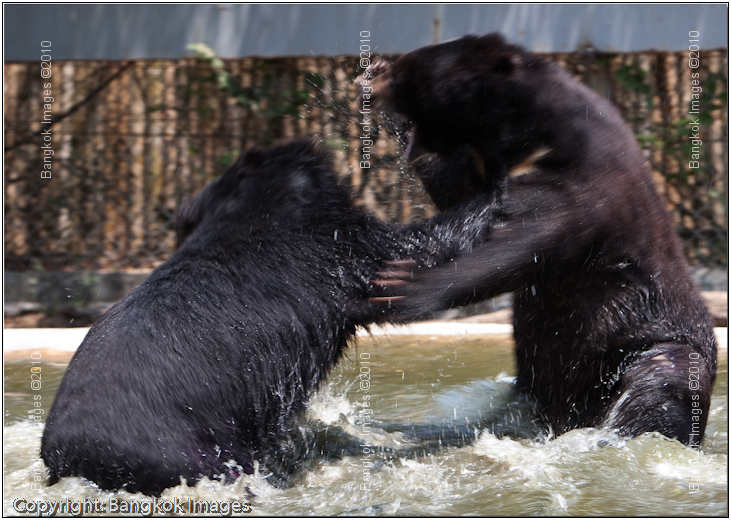
Canon 5d Mark II, 70-200mm F2.8L IS @F5 1/100th 120mm ISO 100
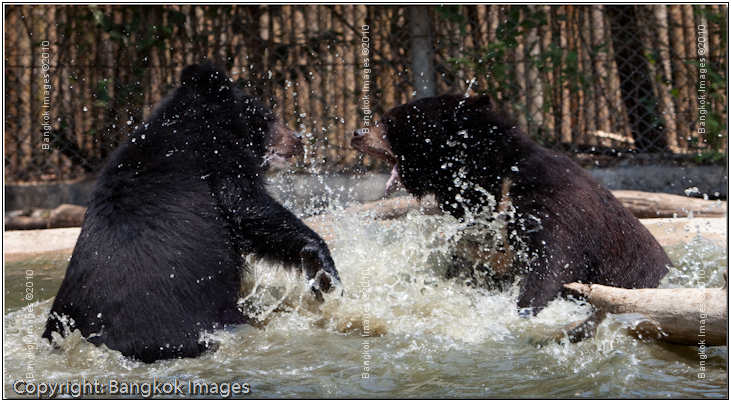
Canon 5d Mark II, 70-200mm F2.8L IS @F5 1/400th 120mm ISO 100
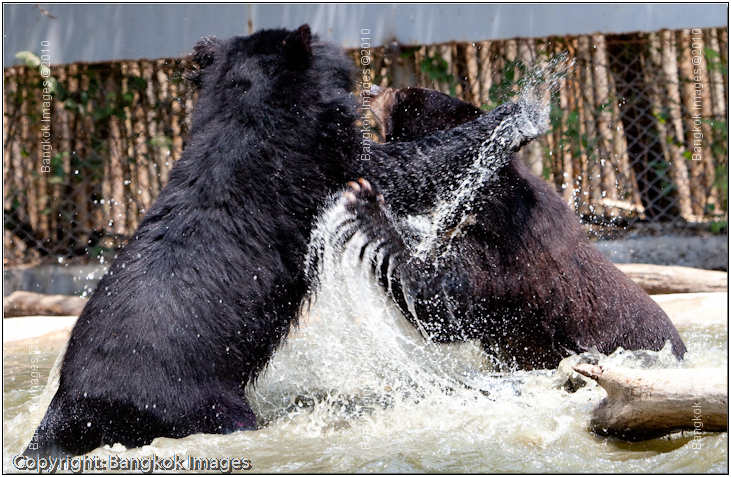
Canon 5d Mark II, 70-200mm F2.8L IS @F5 1/640th 120mm ISO 100
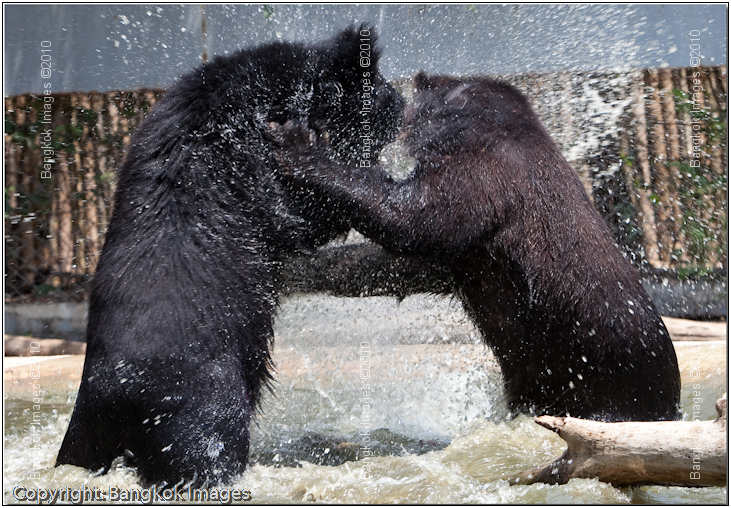
Canon 5d Mark II, 70-200mm F2.8L IS @F5 1/250th 120mm ISO 100

Canon 5d Mark II, 70-200mm F2.8L IS @F5 1/500th 120mm ISO 100
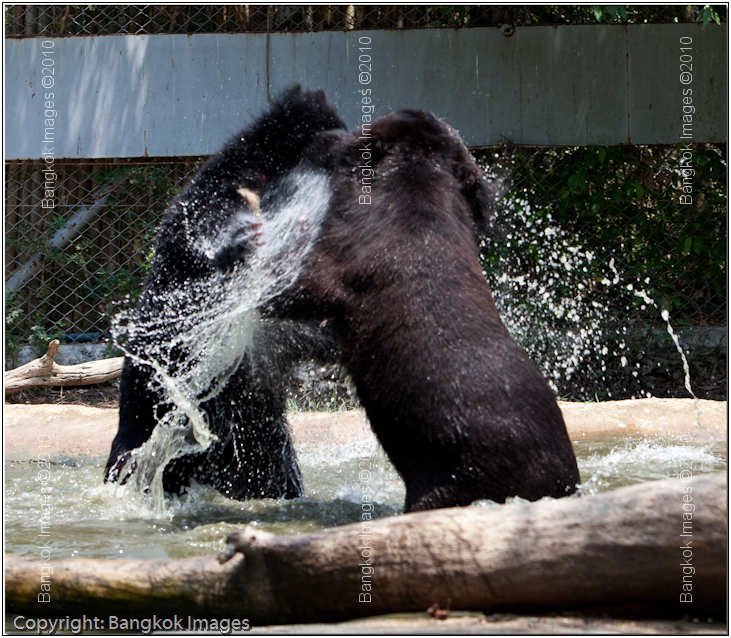
Canon 5d Mark II, 70-200mm F2.8L IS @F5 1/320th 100mm ISO 100
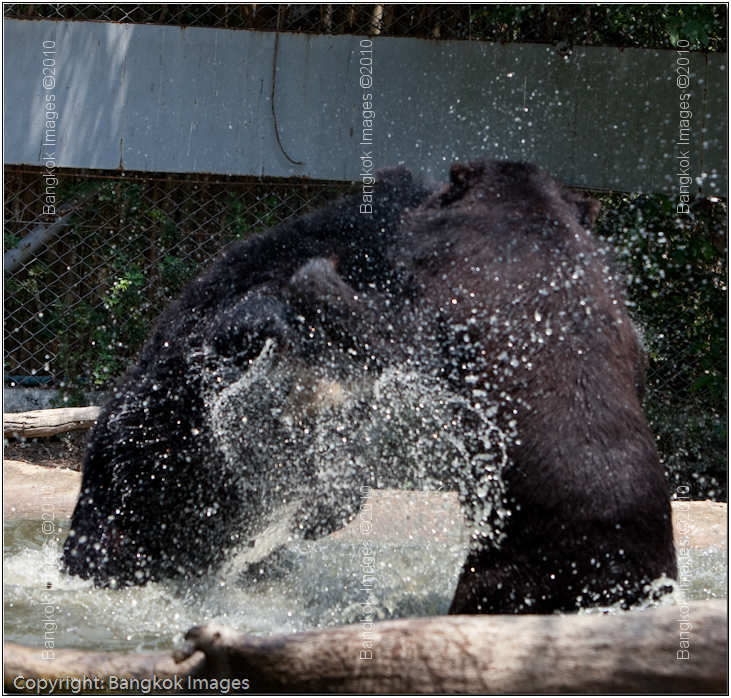
Canon 5d Mark II, 70-200mm F2.8L IS @F5 1/500th 100mm ISO 100
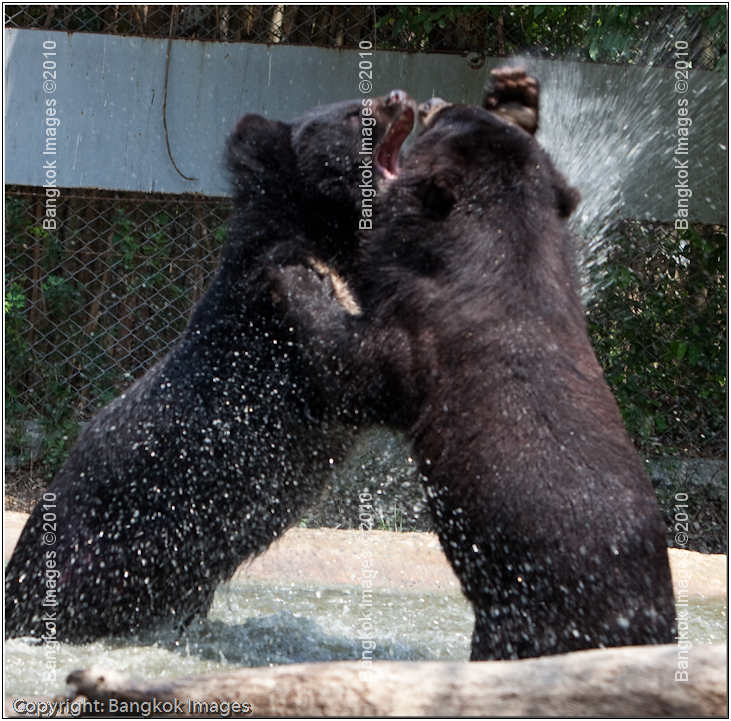
Canon 5d Mark II, 70-200mm F2.8L IS @F5 1/200th 100mm ISO 100

Canon 5d Mark II, 70-200mm F2.8L IS @F5 1/250th 120mm ISO 100
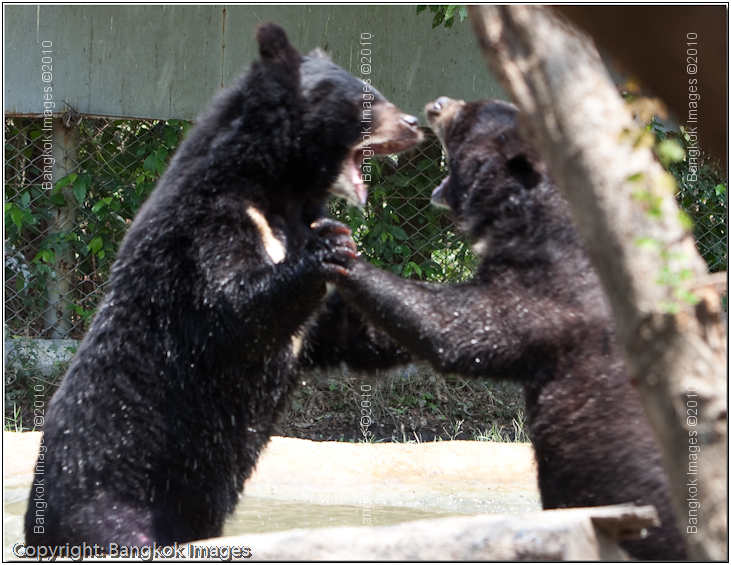
Canon 5d Mark II, 70-200mm F2.8L IS @F5 1/100th 100mm ISO 100

Canon 5d Mark II, 70-200mm F2.8L IS @F5 1/250th 105mm ISO 100
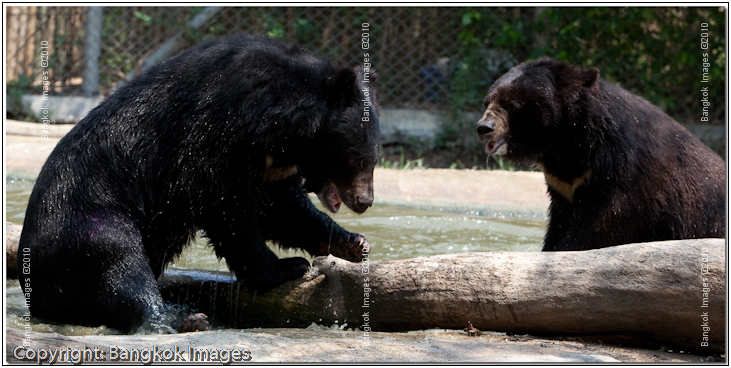
Canon 5d Mark II, 70-200mm F2.8L IS @F5 1/250th 105mm ISO 100
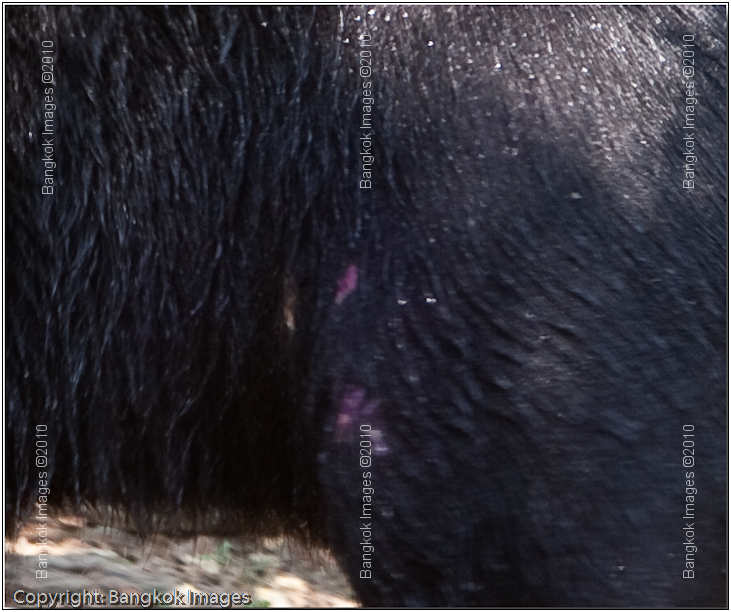
Canon 5d Mark II, 70-200mm F2.8L IS @F5 1/60th 200mm ISO 100
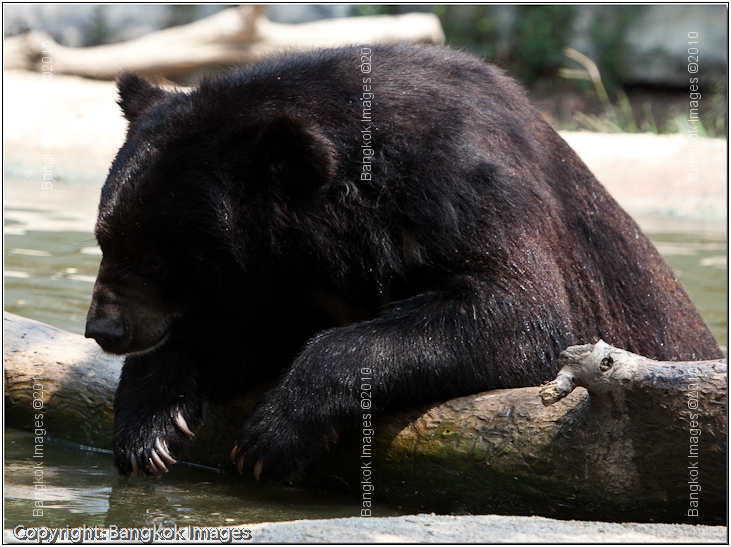
Canon 5d Mark II, 70-200mm F2.8L IS @F5 1/160th 155mm ISO 100
Technique Analysis — Careful analysis of the exfil shooting data by an observer reveals the aperture remained the same at F5 as did the ISO at 100. The shutter speed and focal length were the only dynamic variables. This tells the astute observer that I was in Av (aperture priority) mode and during the 4-5 seconds this fight took place I only variable I could control was the focal length by zoom which I did. Any changes to the controls that would take even a full second would result in 4-5 images in this sequence missing.
The camera was set up for careful shooting of static subjects. This means single point autofocus (AF), one shot AF, Av mode, ISO locked at 100 for the best quality. During the rest of my shooting I only needed to frame by zoom, center the single AF on the closest eye of the subject, take an exposure and check the histogram varying the exposure compensation (Ev) as required. Obviously these settings were not ideal for a fast paced fast action sequence such as this. What would have been the ideal settings for this sort of thing?
The ideal settings for this type of action would be TV (shutter priority (shutter set at 1/500th minimum)), automatic ISO selection, continuous focus, and all focal points active.
So now I ask myself exactly what I learned from the above? I learned I wasn't prepared and I should have been. I could have been prepared for a fast action sequence by assigning the above settings and values into one of my three assignable custom modes. Now they are. Next time something like this happens I can reach for the big mode dial without the camera leaving my eye and instantly switch to the ideal settings and values. Lesson learned!
Review, Mountainsmoth Tour Lumbar Pack *menu
Tom Tweedel is a good friend with significant experience in China and has self-published several interesting volumes of his travels in China complete with many great images and informative narrative. Last year he visited Thailand for the first time and I had a great time showing him around the area. Somehow he found time to put together a like 340 page book of his travels around Thailand and you can get your copy here! I've got a copy of this book and I can tell you it's well worth it, especially for first time travelers or if you haven't seen more of Thailand than downtown Bangkok.
Tweedel is a good friend with significant experience in China and has self-published several interesting volumes of his travels in China complete with many great images and informative narrative. Last year he visited Thailand for the first time and I had a great time showing him around the area. Somehow he found time to put together a like 340 page book of his travels around Thailand and you can get your copy here! I've got a copy of this book and I can tell you it's well worth it, especially for first time travelers or if you haven't seen more of Thailand than downtown Bangkok.
When Tom agreed to become part of our small select product review team I was both excited and grateful. I hope you enjoy this and future reviews by Tom. For those whose plans include extended travel in Thailand and China I’d recommend contacting Tom and inquiring into obtaining copies of his books. Tom Tweedel is an Austin, TX based photographer and can be reached at: tomsds@austin.rr.com

Mountain Smith Tour Lumbar Pack
From time to time I get asked about what’s the best way to carry gear when travelling through Asia. There is no single best solution or perfect setup for everyone. It depends on so many things like where you are going, what you are taking, how
you are getting there, what type of shooting you want to do etc. But most of all it depends on YOU, your style and how much effort you're willing to expend to get what you want. I’ve known guys who took some serious gear on a trip
and ended up leaving it in the hotel room and using their pocket camera for 90% of their shots because it was easy. Be real about what your willing lug around and take the trouble to use and decisions become much easier.

Camera Bag
In my different trips to China (and around the US) I went through many generations of equipment. Everything from military surplus backpacks to high fashion Eagle Creek travel stuff. Some worked pretty well,
some not so well. Generally I carried to much so I focused on what I used, what I didn’t and what was really important. From that I came up with a list of must haves and nice to haves. When it all came down my camera bag of choice for just
about all occasions is not actually a camera bag. It’s the Mountainsmith Tour Lumbar pack.
It is widely available at many outdoor stores or online.
Overview
The Tour is a Lumbar pack which means it is primarily meant to be worn around the waist on the small of your back. However the size of this bag makes it versatile enough to mount up front or even sling like a bag.
The main compartment is both big enough and properly shaped to handle most of my main gear for an outing. It can hold an SLR, 2 lenses and a flash. It doesn’t give you absolute instant access like a compartmentalized lens bag would but its fast
enough to swap things out you need to. It has an organizer pocket inside the main bag that can be used to store knickknacks like batteries and lens clothes. The padding of the main compartment is adequate for knocks and scrapes but you wouldn’t
want to trust it to take a full fall.
In front of the main compartment is a secondary compartment good for putting a filter wallet or other larger (usually flat) accessories.
On the back there is pocket between the lumbar padding and the bag. This is useful for storing things like hand towels, a small book or smaller fragile objects. On the sides are two mesh pockets which have a variety of uses. On the front there is elastic
webbing for stashing a jacket and several mounting points across the bag to attach things to. There are multiple adjustment straps to fit the bag to a variety of users and loads.
The build quality is excellent with most of the wear points being reinforced and double stitched. Its reasonably water resistant (as much as most daypacks). All the zippers have rubber ends on them.

Use
I settled on the lumbar pack (vs. many other packs) for a variety of reasons. First and foremost it is comfortable. I am able to carry an acceptable amount of gear in relative comfort. Having it on my lower
back, or slug like a bag reduces the amount of surface area that is stuck to my body. This allows for extra ventilation which is very nice for long term comfort when trudging through the tropics of Southeast Asia or the heat of Texas summers.
The size was “just right”. It can carry an outings worth of gear without much wasted space or weight. Because its not too big its easy to reach around and get things in and out of (vs. a backpack which typically has to be unslung to access). This size (or lack of) is a huge asset on crowded Asian streets. You can shift it to the side of your hip and maintain a lower cross section when working through the crowds.

Being reasonably water resistant it’s where I’ll stash my gear if things start getting too wet. I also make a point to bring a plastic bag along in case the rains get really out of hand.
The Mesh pockets on the side are absolutely wonderful to have. When visiting the tropics I go through a lot of water. I used to worry about carrying enough water to last me the day (which was heavy). I discovered
that bottled water or other suitable drinks are ubiquitously available everywhere for reasonable prices (nothing like getting to the top of a mountain and having some kid waiting there with an ice cold one for $.50).
So you buy a bottle or two, maybe mix one up with some powdered drink mix and toss them in the side pockets. They are in easy reach and don’t get anything else wet if they condense or spill. The pockets expand enough to hold 2 full sized
Gatorade bottles each if needed.
The belt is wide with combination of nylon straps and webbing. It clicks together with a large plastic buckle (make sure you hear it click, I’ve had it not a few times and almost had a disaster).
It works best to loosen it up a bit, click it and then tighten it up to your level of comfort. There are two mounting points on the belt as well as the stabilizer straps. I clip a couple of carabineers to the mounting points. These serve as quick
attach mounting points to hold things. Very useful when the wife does a little too much shopping and you have to carry back. Just hook the bag to the clip and go on. I also mounted a small nylon case that can hold a pocket camera or a cell phone.
The stabilizer straps are very useful for cinching everything down to prevent it from shifting or flopping around if you have to put some speed on. They are easy to tighten or loosen as needed when your load shifts form switching out gear/lenses. They
also help keep the internal contents from knocking around each other too much.
In addition to the regular strap that comes with the bag there is the option for some “suspender” type backpack straps. If you plan on carrying heavy, dense loads they do provide some utility but I prefer to not to use them for several reasons.
Primarily because they slow down and complicate access to the pack and reduces its flexibility. It’s not so easy to just rotate it around to access stuff. Also the straps (like any) compress your clothing against your body, cuts down on
cooling air in hot climates. This is counter to one of the big appeals of this pack. Finally it’s really a case of the right tool for the job. If you have this pack loaded down so heavy that you need straps to support the weight the chances
are you really should be using a small backpack or something larger that will give you easier access to your stuff

The one condition that I have found the straps useful for is if you’re going through rough wilderness terrain. Not so much because they allow you extra weight but because the straps give you an extra measure of stability to keep the weight from shifting and bouncing. This can be desirable if you’re climbing or running through terrain that requires good balance. But for general use I found the included strap slung around the shoulder provides adequate support and stability if more is needed.
The there are two small top handles on top of the bag which makes it easy to hand carry. But more importantly there is a very good and very useful shoulder strap.
When you have the bag heavily loaded putting it on your waist can be tricky since it sags a bit. Trying to get it on the right spot and clicked up can be challenging. But the strap makes it easy. Slip the strap over one shoulder to take up the weight
and slack, snap the belt, tighten it up and slide the strap off and your ready to go.
Also when you access stuff the strap is great, if you’re under load the main body of the unit is under compression (keeps it tight and stable) but this can make it hard to pull things out. Slip
up the strap, take off the load and unsnap the belt and it’s easy to go fishing.
When you need to run fast sometimes the bag can flop up and down making it uncomfortable, just bring the strap up and take some weight off and you can run without a problem.
Or you can just use the strap and stow the waist belt (it slides in underneath the lumbar support) and use it as a bag. The strap pad is quite good.
If straps are not your thing you can detach it and just go with the pack. I was worried at first the strap might get in the way but I've never had problems and it’s always there when I need it.
One kind of unspoken advantage the bag has over a traditional camera bag is it is somewhat less conspicuous to would be thieves since it doesn’t have “I’m a camera bag” log emblazoned
on it. I suspect it would stand up to cutpurses and pickpockets as well as any other daypack (which is to say not great). If your milling about the train station or other place with lots of shifty characters
it’s probably best to rotate it around front to keep an eye on things. If your not loaded down too much you can even stuff all your camera gear in the bag to downgrade your attractiveness to desperate people as it just looks like another
pack (all of which cost more than they make in a month).
Its use doesn’t end with the trip either. It’s got plenty of uses around town or on a day hike. Especially if you have kids. The mesh pockets are perfect for sippy cups or drink bottles and wet or soiled clothing. You can strap abandoned
clothing to the outside and carry snacks, first aid kits, flashlights, small toys, diaper changes, napkins or anything else in there. It holds it comfortably and securely. If your kids are toddlers it can make a dandy kid sling by using the shoulder
strap and having them “sit” on it when you have to carry them long distances.
The bag is not perfect, there are a few flaws. Being a lumbar pack it cannot comfortably support as much weight as a backpack. So you’ve got to figure out how much weight is comfortable for you and then pay attention not to exceed it.
Access to things is not as quick and convenient as a good (but wide) dedicated camera bag. You’ll probably have to do some shifting and digging. That’s the price you pay for a smaller package.
Sometimes you have to loosen the stabilizer straps.
You also have to be careful when bucking or unbuckling the main clip. If you’ve got a heavy load it can shift and slip out of your fingers. When snapping it make sure both sides of the buckle snap. I found its best to throw the strap over your
shoulder and lift it up taking the weight of the bag on your shoulder while snapping or unsnapping it. It’s easy to do once you get the strap length right.

Its also not especially fashionable outside certain circles (most of which are not in Asia). But chances are if you’re a white person with a big camera in your hands their going to know you’re
a tourist anyway and you have to suffer all that being a tourist entails (touts, jacked up prices, rip off scams and other “solicitations”). If you're hanging with a more affluent crowd
this probably isn’t going to be your first choice of a bag, but then you're probably not bringing the heavy photographic artillery either.
The bag is available in a variety of colors. The first one I got was black but I returned it because all the pockets and zippers and straps just blended together too well and I found myself having to look for things. Not to mention all those small photographic
accessories are black and end up in a black bag. I returned it and got a red one which stands out a bit more and is easy to use. The interior is yellow which makes it easy to spot that small black piece of plastic you are digging for.

Conclusion
If your successful in keeping your kit down and looking for a versatile go everywhere, do everything bag this is an excellent choice. Its can handle everything you need for an outing or a small photo job. Its not perfect but for what I do and what I want
it’s the best I’ve found so far.
Photography News of Interest *menu
Local Thailand Photo Show News! The Photo World Fair 2010 will be held at the Royal Paragon Hall, 5th fl. Siam Paragon during April 29-May 2. They will have discounts on equipment and freebies with purchase . Comp World 2010 will also be in the same area. You can pre-order The Canon EOS550D (T2i) with the EF-S 18-55 IS for 29,900, normally 32,900. There will be 100 available for order starting March 29. Call 02-440-0333 on weekdays between 0900-1630. You'll have to transfer 1,500 baht deposit to their account and then fax them the transfer receipt within 48 hours of the order. They'll
call you back to confirm. You can pay the outstanding balance at their kiosk.
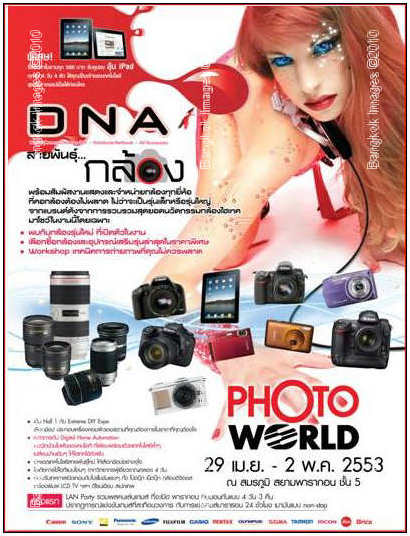
Reading this review
was interesting, all about the speed of the top 5 browsers.. but the results were a lot less exciting once you took a good look at things. The show a table adding up how many times each browser got 1st on a test, 2nd, 3rd, etc, etc.. Add
them up.. and they're all within 3-4 points of each other.. hardly a difference to be concerned with either way. I'm more interested in compatibility, convenience (add-ons), and security.. in that order. How about you?

Rodney Alcala is the most prolific serial killer in US history and has recently been sentenced to death for five murders. Police suspect he could be responsible for 130 more. Rodney Alcala would often use photography has his ruse to engage pretty young women. A search of his storage locker revealed over 1000 photographs from such sessions and police fear many in the pictures could be his victims. A couple of the pictures might be showing women already dead.
Read the entire article here.



Peter Gowland, a fashion photographer for over six decades, passed away this month at 93. With more than
a 1000 magazine covers to his name including such celebrities as Roch Hudson and Robert Wagner, Rolling Stones, Playboy, and Modern Photography. He also invented the twin-lens Gowlandfex camera which is still used by famous photographers such
as Annie Leibovitz and Yousuf Karsh. He authored 26 books and was a regular on the photography lecture circuit.

It goes to show that no matter how successful you become with photography, or how much money you make, if you're finances aren't well managed disaster lurks. Annie Leibovitz has been in the news on and off for the last few years because of her financial troubles and is now facing new accusations for not paying her bills.

This is regionally germane. The remains of Errol Flynn's son have been found in Cambodia. Sean Flynn disappeared during the Cambodian War 40 years ago.
At least 37 journalists and photographers have been killed or are still listed as missing from the 1970-1975 war, the US backed Lon Nol government against the North Vietnamese Khmer Rouge.
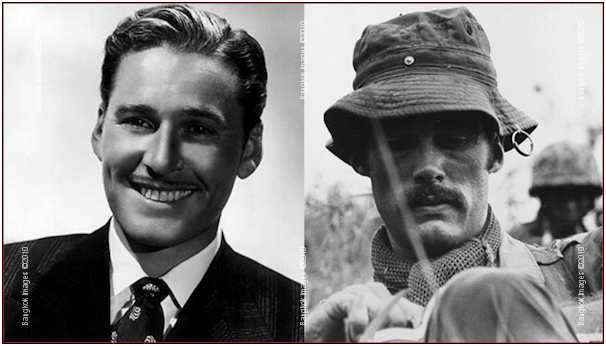
Anyone have the new Apple Ipad yet? If not, before you run out and purchase one you might want toread this article about
how the authors $499 USD planned purchase turned into a $1170 USD purchase. A good read for sure.

The 70-200mm telephoto is the staple of news journalists, wildlife photographers, hobbyists, and just about anyone serious about photography has one in their bag. Digital Photography Review reviews the excellent Sony 70-200mm F2.8 G. Most lenses in this genre are excellent and this lens is no exception. If you shoot a Sony or Minolta body this review might be of interest to you.
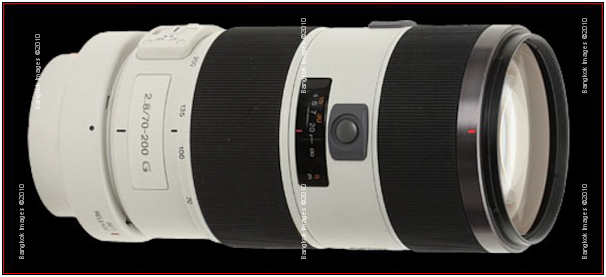
Photography as a profession has underwent significant changes in the last decade. Anyone looking towards a career in photography will want to read this article. There will always be a way to earn a decent living as a talented photographer, but some traditional paths are closing fast while other creative paths open.
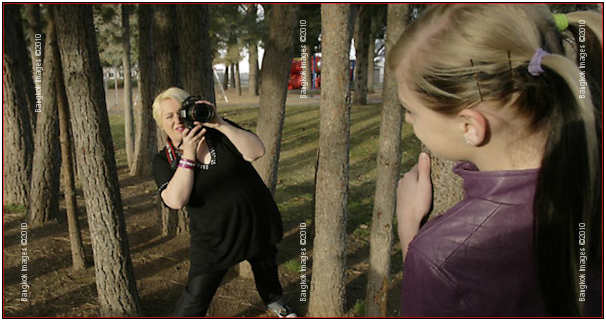
The EOS Canon 500d (T1i) made a big splash in the consumer DSLR market and the new EOS Canon 550d (T2i Rebel) follows with even
more improvements making for a very balanced DSLR at a reasonable price. Digital Photography Reviewthoroughly tests
the new EOS Canon 550d (Rebel T2i). If you're just starting out with digital photography and have been leaning towards a DSLR you won't be disappointed with the Canon EOS 550d (T2i).
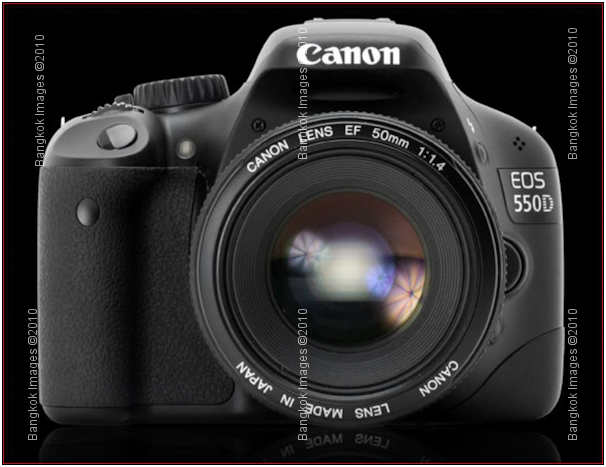
This is ground breaking and will affect many of us to some extent. The US Justice Department is supporting a proposal from The Associated Press to create a voluntary 'digital registry' to help news organizations track their content over the internet. I suspect if this is ever created it will soon become available to professional photographers
world wide. Enforcement and penalties haven't been discussed but are sure to be a component of any such effort.
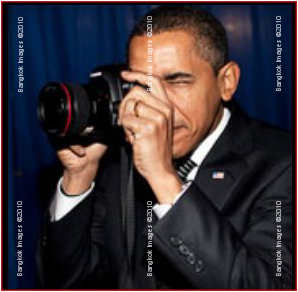
Adobe announces incremental upgrades to Lightroom V2.7 and Adobe Camera Raw 5.7 to support the latest camera releases and fix small bugs. I've already upgraded both and they work great.

Readers Submissions *menu
Steve:
A few pictures from my wife's travel in Nepal and India to visit the birthplace and burial site of Lord Buddha. A two week adventure with 30 folks from her Thai Temple here in California. She learned many things and now really appreciates how nice
it is in Thailand and California.
The last picture says it all. 555
Rick








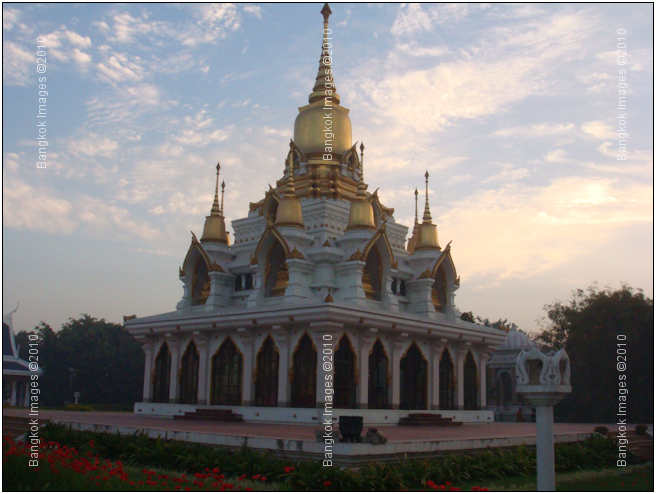
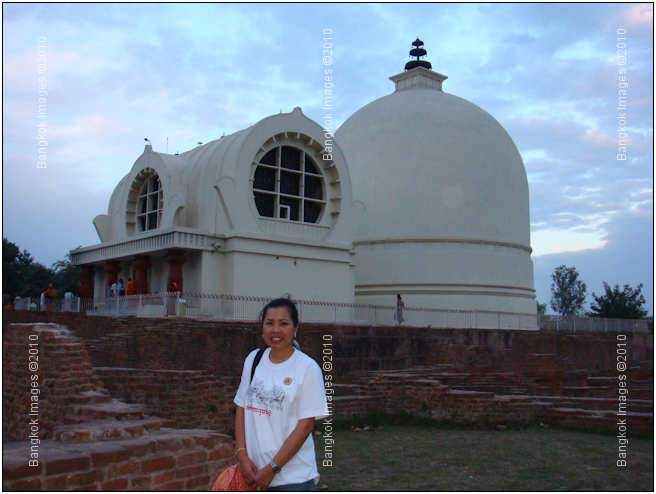
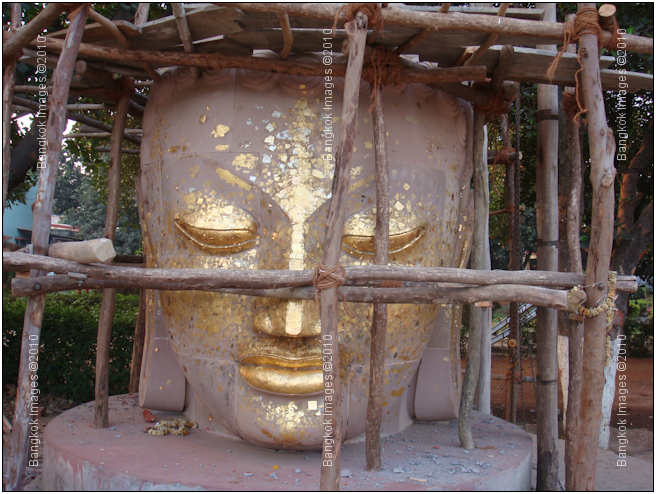

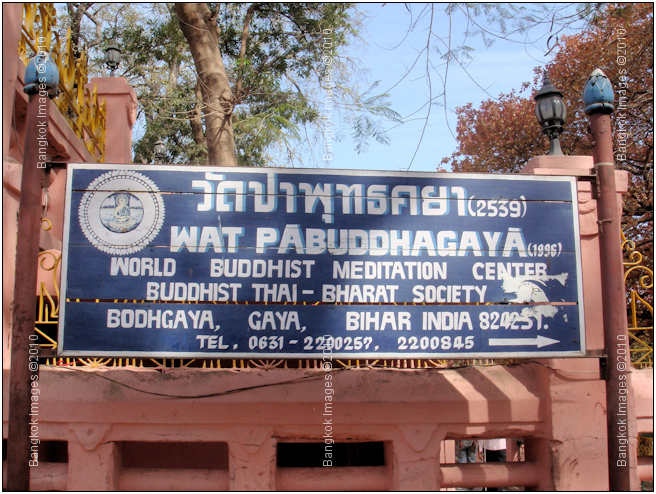

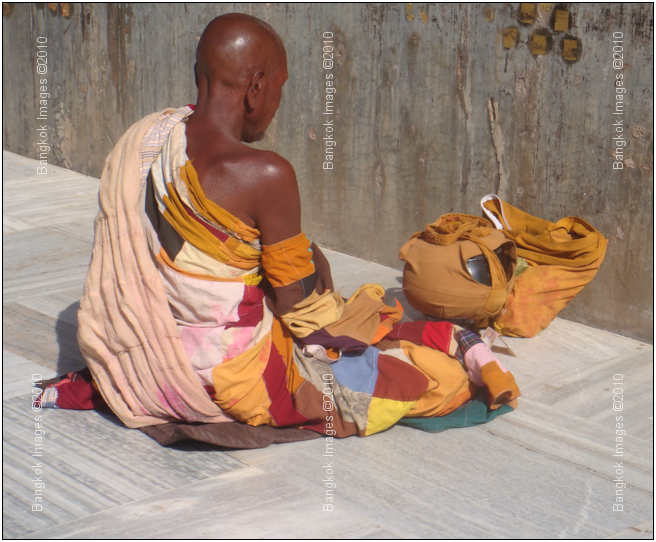
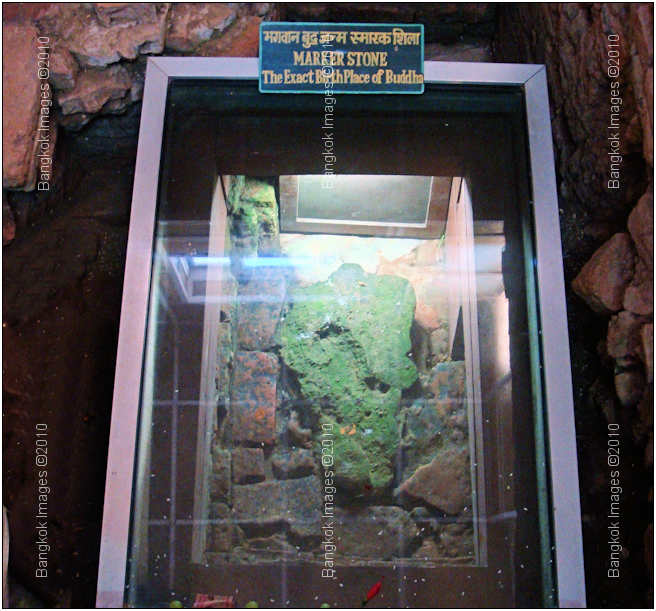
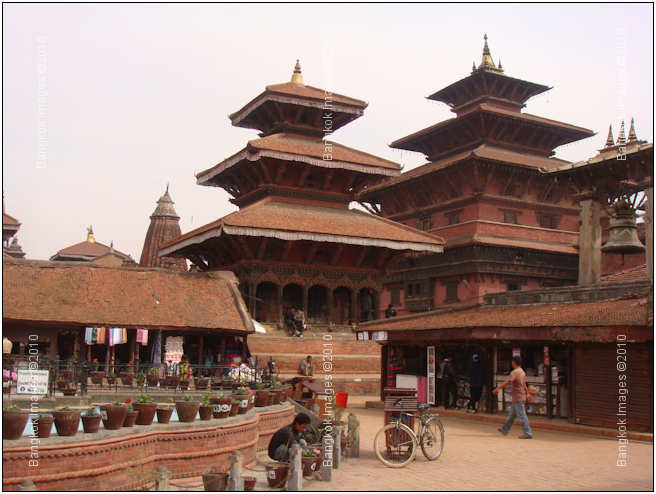
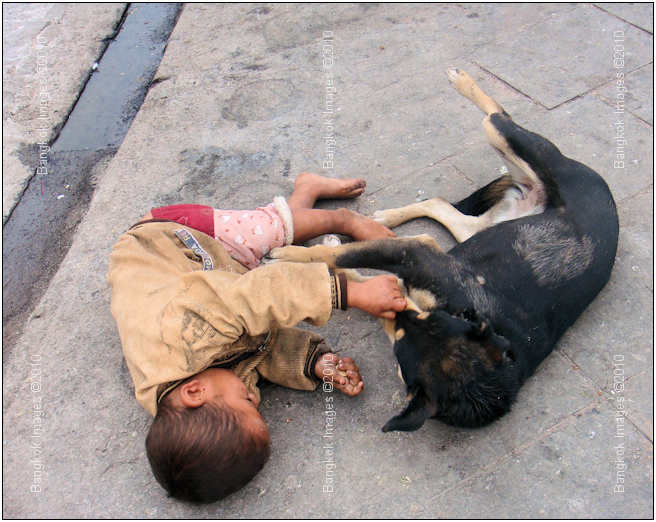
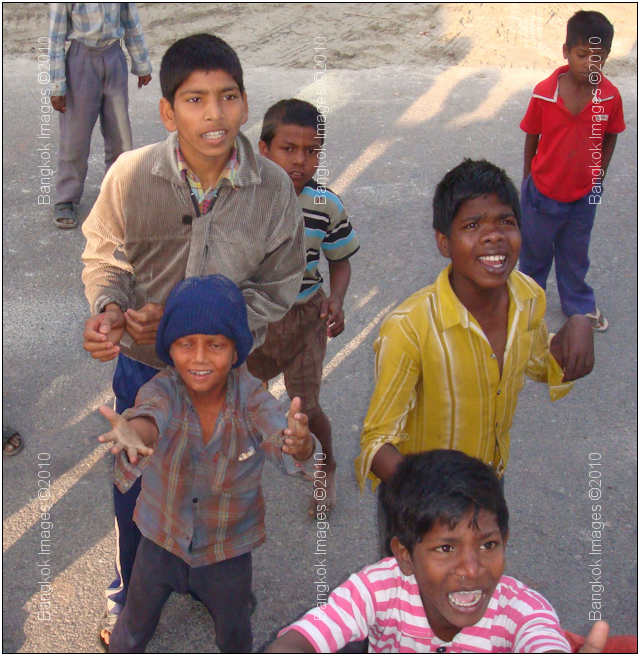
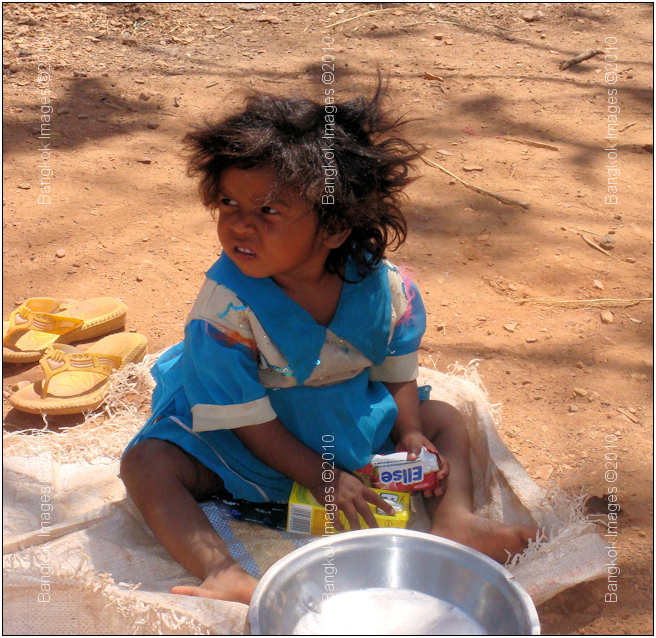
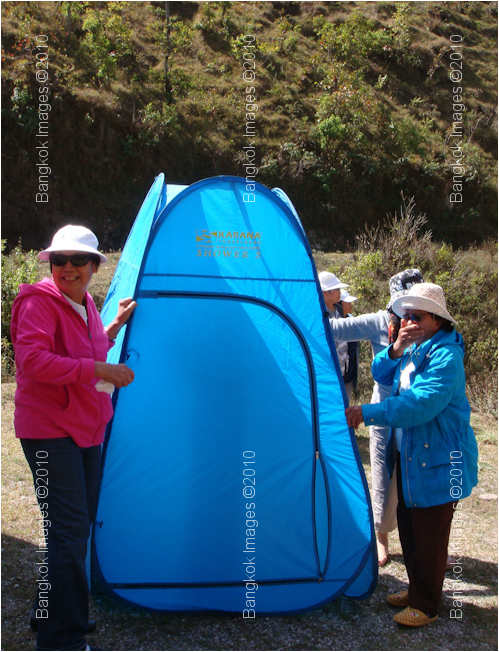
Rick –
Fun pictures! We don't get to see images from these locations very often. Thank you!
Steve
Hi
This is a day shooting I did in Kuala Lumpur, Malaysia.
They have bikes and babes there too.
Bart
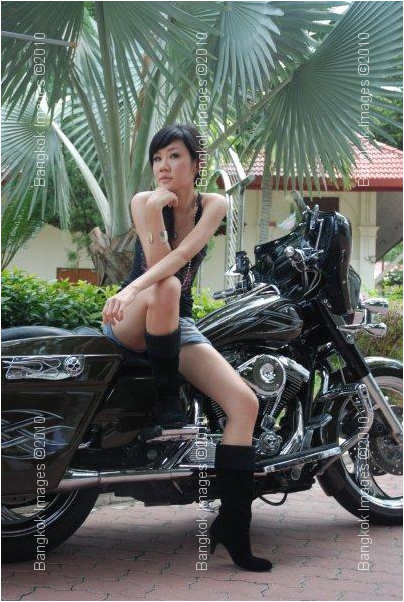
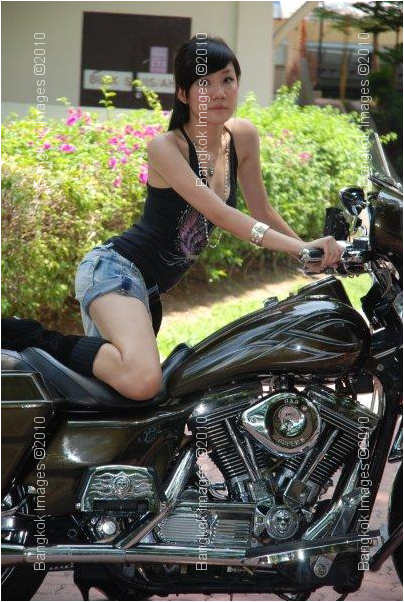
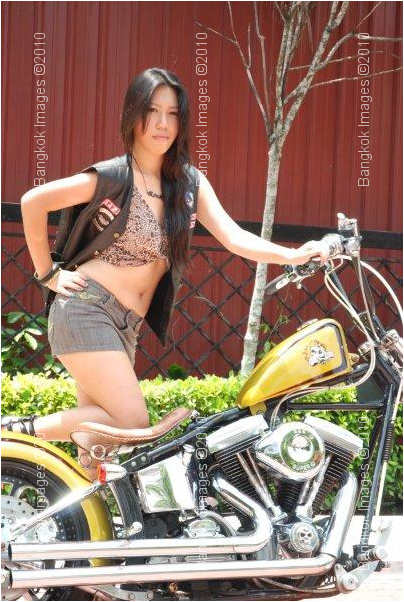
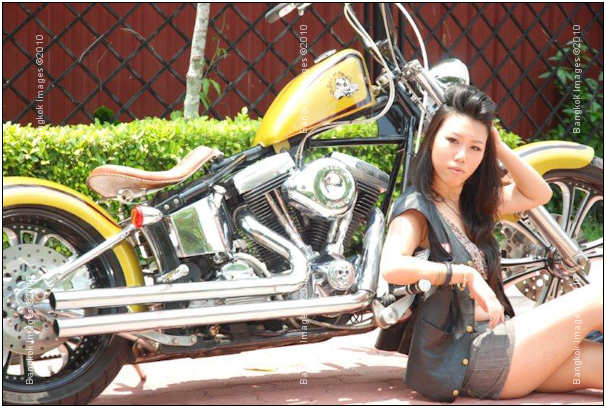
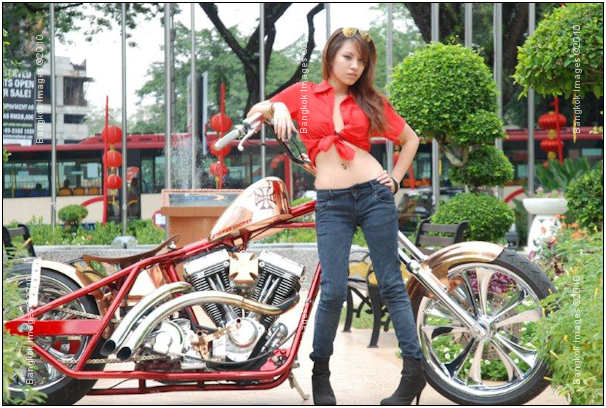
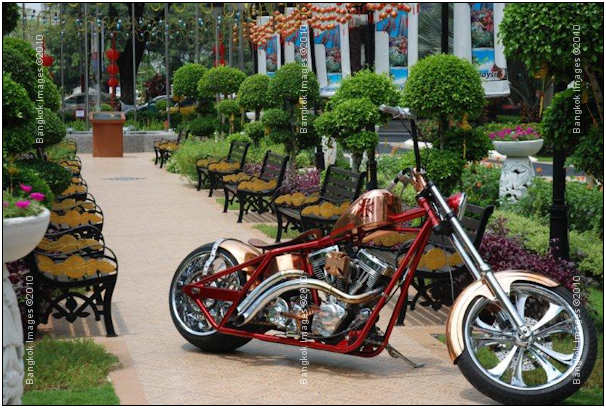
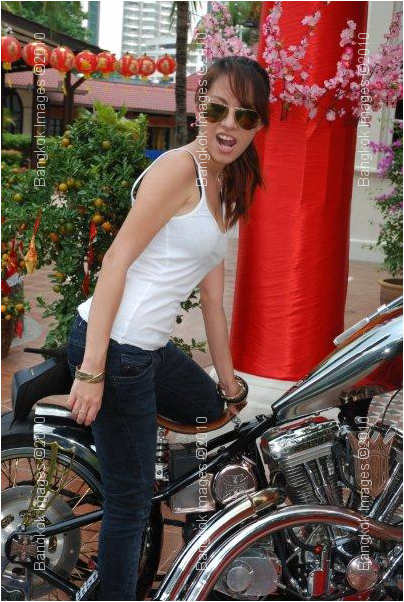
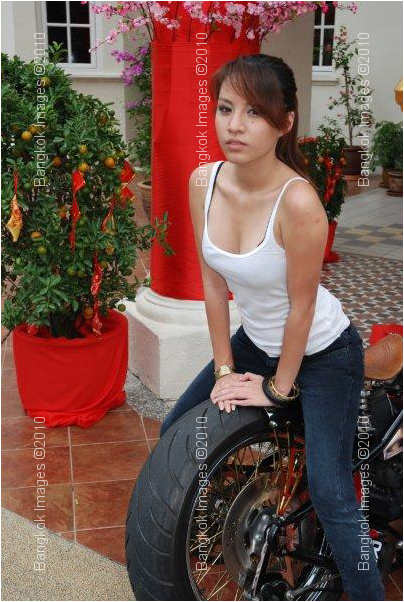
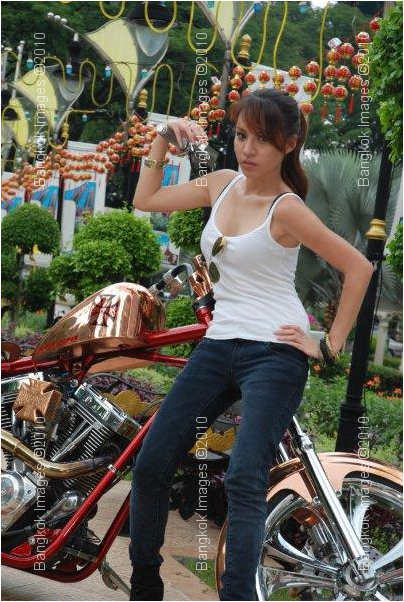
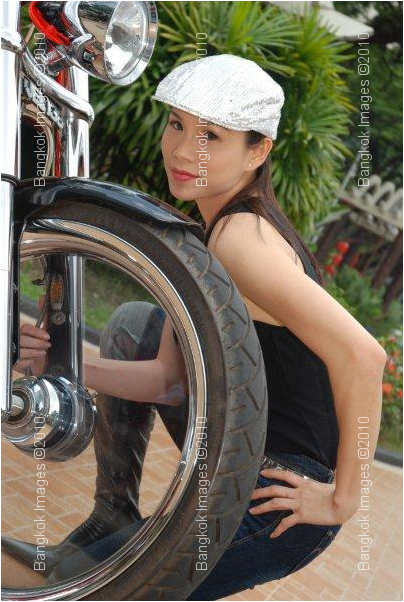
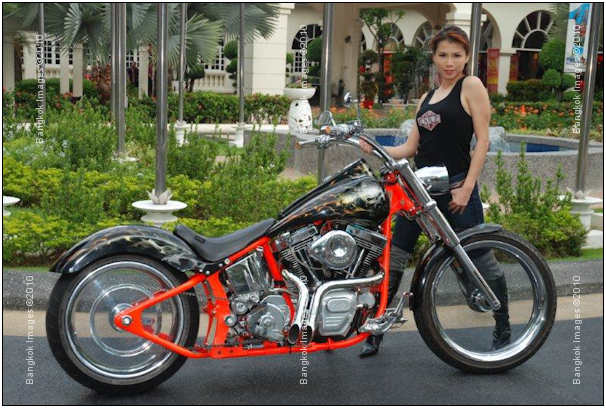
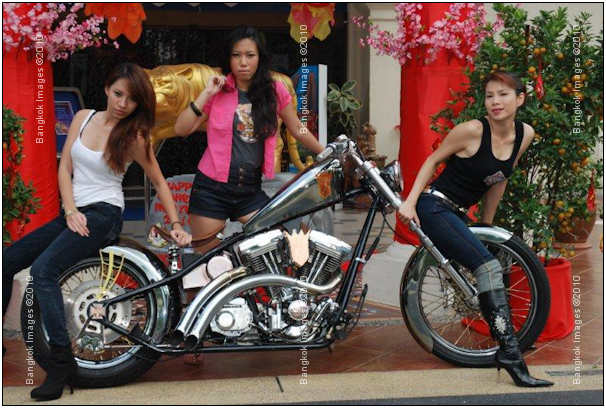
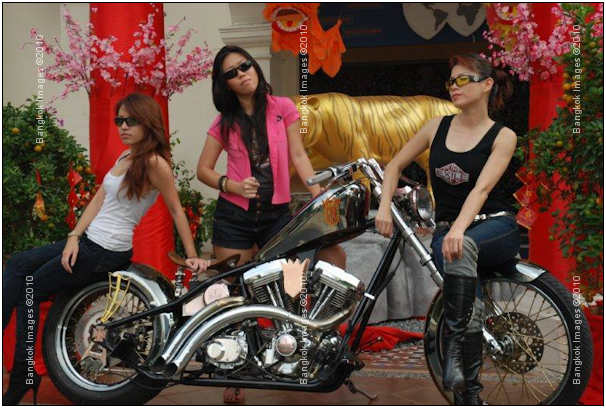
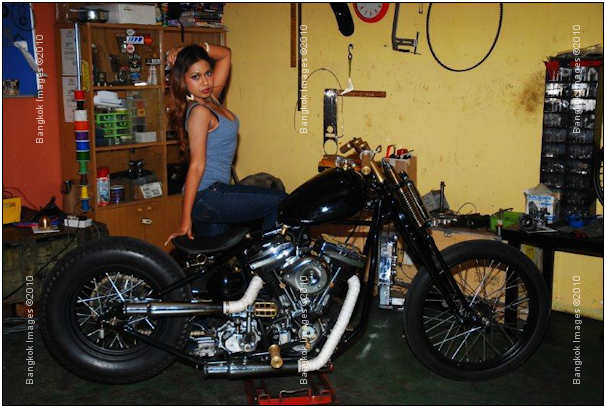

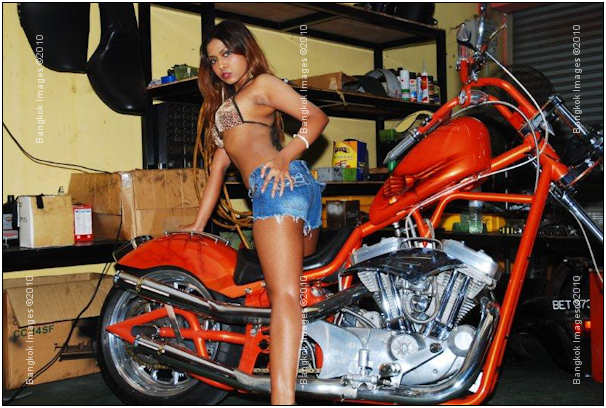
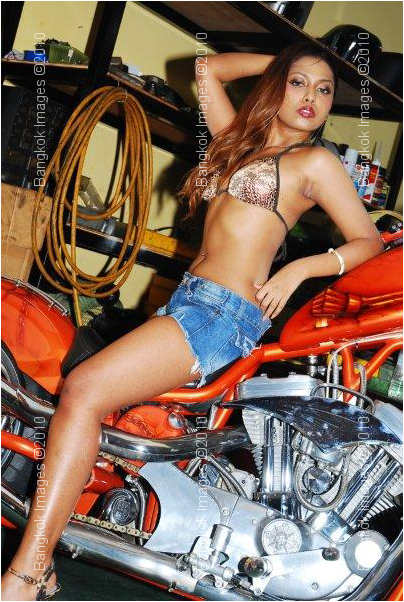
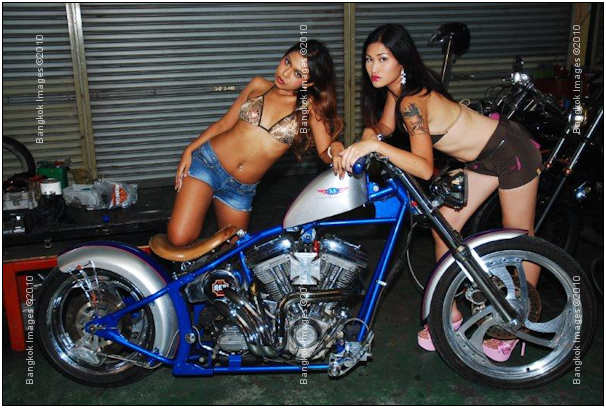
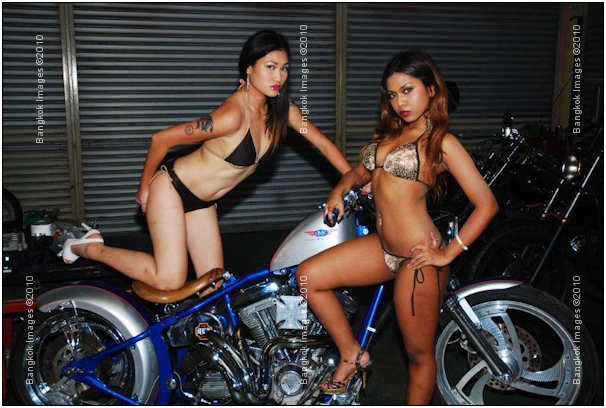
Bart –
This set was a lot of fun! I'm sure the readers will enjoy them. My do you get around..
Steve
I suspect the readers submissions will be a highly anticipated section of this column and I encourage anyone with photographs and travel accounts they'd like to share to please send them to me at: QandA@Bkkimages.com
Readers Questions *menu
Steve
I really enjoy reading your photography column and though to me the good camera equipment is beyond my means (I have a secondhand Nikon D70 and a couple of lenses that I get by with) it is the computer hardware and software that are really useful to read.
I have always had computers that came off a shelf ready built – mostly by Dell but your articles have raised my interest to try and put one together myself. My question then is where do buy the components – I live in Laos where supplies are limited but
access to Thailand is not that difficult. But it seems to me that you get really high quality and up to date components – can these be bought in Thailand at the average superstore?
Thanks again for the column.
Tony
Tony –
Thank you for the feedback, it's always great to hear when a reader enjoys the column, especially if it encourages photography. A Nikon D70 IS a good camera and properly used you can make excellent images with it. Do you know many wedding and portrait
photographers use D70's? They're high quality, reliable, and inexpensive.
I'm happy you're considering building your own computer. Did you catch my Intel Core i7-920
build a few months back? Lots of good information in that feature. Its a lot easier than it might appear to build your own system. Its important to follow a few basic precautions you can read about in the feature, but overall it's easier
than putting together tinkertoys.
The answer to your question is yes and no. Yes, high end components can easily be purchased in Thailand, but not at your average superstore. Panthip Plaza and the other IT malls will have tons of part stores and they'll all carry the basic cases,
power supplies, drives, motherboards, CPU's, video cards, and RAM. However, the really high end stuff is limited to just a handful of enthusiast stores which are located close together on the ground floor of Panthip Plaza. These stores will
have most of the high end (read expensive) components most Thai consumers aren't willing to pay for. They'll also carry high end air and water cooling equipment, the best cases available
(Lian-li), great power supplies (PC Power and Cooling), and most all you need.
There is one caveat. If it's brand new on the market it probably won't be carried in Thailand. You'll need to source it in America (cheapest prices in the world on such things) instead. It
generally takes 3-6 months for products to be released in Thailand after they're released in the west.
A solution to getting these parts is to become part of a group of expats who sometimes travel back to the west (US, UK, etc) and are willing to hand carry things back in their luggage for you. When you go
you'll do the same for them. Small groups of 5-6 work out well depending on how frequently you travel. It seems I know someone coming in from the states a few times a month. We simply place our orders and ship to the current travelers US
residence (usually a family home) and he brings our toys back in his luggage. Of course size/weight/and available luggage room all come into play.. but generally most computer parts are small and weigh very little. Fortunately the heavier items
like cases and power supplies can be purchased here locally.
In some cases when no one seems to carry what you want, and for some reason (no one is going, you want a warranty, price, etc) you can't source it from the west, then consider contacting the home companies
customer service and request help. Most will be happy to put you in touch with their closest distributor of if there isn't one, they might import directly to you. Recently I ordered two very high end imaging monitors from NEC and I wanted
a local warranty. These monitors weren't carried locally because I was told "Thai people won't pay that much", but NEC was happy to prompt their distributor to order them in for me. The price was reasonable (about 20% more than online discounters in the states),
I get a full four year warranty, but I must wait up to 45 days for them to come in.
I hope this helps. I really encourage you to build your own PC because not only can you build the system you really want, but you can save money doing it and learn to work on your own computer in the process.
Take care
Steve
Please submit your questions to QandA@Bkkimages.com All questions will be answered and most will show up in the weekly column.
A Snapshot of Bangkok Images Week in Review *menu
A slow week due to several cancelations because of the political protests in Bangkok. An inside source in the hotel industry tells me there have been mass cancelations at the 4-5 Star hotels, but not nearly as many as the lower end hotels.
We continue to work on our new website and we're less than 45 days from the big launch. We're designing the new website with several goals in mind. We want to make the content from all the weekly columns much more accessible and easy to find,
make over 50 galleries (initially) available for viewing, provide a discussion forum that centers around photography in SEA, and more.. but I'm not going to tell you all the great features today..
;o) In doing so we hope to become the top English speaking Photography website in SEA. And if you can't read English don't worry, we're working on that too.. 🙂 I'm looking for ideas for the sites grand opening. An online party?
A real party? Send in your ideas!
Infocus Blog, Don't Drop That! *menu
The ever present possibility of dropping a piece of expensive camera equipment follows us around like Mr. Murphy himself sitting on your shoulder looking for trouble. It's not unusual for me to hold a rig worth in excess of $10,000 USD's, amateur
rigs can easily surpass $2000-$3000. A simple drop from just a few feet high can cause extensive damage and thousands in repair bills.

If we dwell on bad things they often happen. I'll never forgot the time when I was 12 years old and I'd worked for several weeks to buy a nice telescope. I mounted it on my balcony and used it there for several weeks. One day my grandmother
came to visit, saw it on the balcony where I was using it at the time, and really started nagging me about how it was going to fall and break. After a few minutes of her nagging I turned around rather quickly to tell her it wouldn't fall..
when my elbow hit the telescope and I watched in horror as it fell two stories to the ground (narrowly missing her car (drat!)) and broke into many pieces. She just looked at me and said "I
told you so!" My grandmother taught me many such valuable life lessons and I'll miss her terribly. She died this last January at the age of 95.
Such "accidents" can and do happen at any time. While we don't want to worry too much or be paranoid.. we can and should lessen the odds against us by practicing good habits and perhaps obtaining
'smart' carrying and storage equipment. For instance, if you live in Japan or Southern California its probably not a good idea to store your most expensive equipment on the highest shelf of that rickety bookcase.
I've written several times before about packing your gear well for traveling, especially when going through airports or any sort of commercial transportation so I won't go into that part. But what about just generally handling gear and using
it once it's in your hands?
The other day a friend and I went on a photo outing and I had to bite my lip when I saw him pull a really nice 70-200mm F4L lens from his bag WITHOUT A HOOD and mount it on his camera.
I kept waiting for him to pull the hood out and mount it but it never happened. At our destination I offered to let him use my 300mm F2.8L IS lens which is very expensive. The first thing he asked me was "how to you remove the hood?"
The horror of it all.. 🙂 An experienced photographer he'd probably figured out a hood doesn't really do that much as a lens "shade", only rarely does it function as such. But he hadn't yet figured out what hoods are really
designed for. Yep, they're designed to protect your front elements from impacts and even fingerprints. They'll even shield the front elements from raindrops on a rainy day (just don't carry the camera pointing towards the sky).


Many people don't use filters and there is a huge controversy on the subject pretty much evenly split among all levels of photographers so we won't go into that either, but the 300mm F2.8 IS doesn't have or take front filters. These lenses
require the smaller rear mounted 'drop in' filters. Removing the hood would leave the expensive front element on a $5000 USD lens totally exposed to impact and prints. Don't worry, I explained my position and he at least pacified
my paranoia for the day. Time will tell if it really sunk in.. ;o) Lens manufacturers in the past decade or so have figured out that if you make the hood out of a high impact plastic it has a "bounce" affect and will transmit that much
less shock to the lens if you knock the lens against a door frame, tree, railing, car door, etc. Plastic also doesn't bend like metal hoods do.


Another habit people have which I've mentioned before is using a fence top or ledge to set their bag/lenses on during a lens change. A better habit would be to always set your bag on the ground and do your changes from ground level where any accidental
drops will only be a few inches instead of a few feet.
If you spend the big money for a big telephoto lens, then you really should use the thick heavy strap that comes your lens to carry the lens with. With your camera attached continue using the lens strap because the lens will be so much heavier than the
camera body and you can bend your lens mount on your body. All it takes is just a few thousands of an inch to make your images softer on one side than the other.

The straps that come with your camera body are usually low end junk your manufacturer contracted out at the cheapest price. Believe me when I tell you there is a huge difference in quality both in the material and buckle design between a strap that comes
with your Canon 500d and your Canon 1d series professional body.


I'm not a fan of neck straps, in fact I have a small box of the ones that came with my cameras unopened and still in the plastic. Instead I use the Nikon AH-4 "grip strap" which is made of leather and very high quality nylon strapping with quality Velcro and other hardware. I've used these on all my Nikon and Canon DSLRs for over a decade. They never wear out and they've never let me down.. and I use them
daily. These cinch very comfortably around your wrist and will allow you to hold the camera at your side and "let go" to flex your fingers and relax your hand. This is a great feature when working
a long event like a wedding. This sort of strap will also help prevent a 'snatch and grab' thief, or a simple 'slip' when your hands are wet and
sweaty as they tend to get in SEA.

The main point I'm trying to make is that if it's possible for a lens to drop then it will. Sooner or later. A dropped lens will cost you a minimum of several hundred dollars to repair, up to a few thousand. And that doesn't include lost
income or an upset client because you're not longer equipped to finish the gig you're working. This is one of the reasons a real pro carries two of everything they need to shoot a wedding or other important event. Things break, both
by accident and/or defects/wear and tear.
Once during a workshop a client was sampling a high dollar fast lens. He reached for it from the bag, it was hot and humid and his hands were moist with sweat, and he got it out of the bag and he fumbled. We both watched the lens smash into the concrete
deck and we could hear the glass breaking. Immediately I knew it was my fault because I hadn't yet incorporated proper lens handing techniques and cautions into my curriculum. He apologized and that was good enough for me. That night I sat
down and very carefully analyzed how I handled lenses and how I'd use extra care with clients and how I'd teach them as part of the workshop.
I went out the next day and bought a few dozen high quality absorbent hand towels to keep in the vehicle and now we have them available to wipe sweat, wipe our hands before handling equipment, and so forth. From that day on, the lesson my client taught
me, has stayed with me and I pass it on to each new client. Good habits, pre-planning, and being aware as you work and play.
Until next time..



